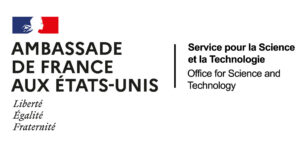Atlanta
Atlanta also benefits from the presence of Emory University‘s research centers and hospital network, and Georgia Tech‘s technological expertise. For its part, Emory University has one of the world’s largest vaccine research centers, the Emory Vaccine Center, which investigates diseases such as Ebola, Covid-19, HIV, malaria, tuberculosis and influenza, and centers dedicated to the development of new drugs, such as the Emory Institute for Drug Development and Drug Innovation Ventures at Emory (DRIVE).
Together, the two universities have set up a joint department, the Wallace H. Coulter Department of Biomedical Engineering, which focuses on biomaterials, regenerative technologies and the application of engineering principles to immunology, oncology, neurology and cardiology, as well as a joint incubator, Biolocity, to accelerate the commercialization of technologies resulting from research at both universities.
In an effort to promote healthcare innovation in the state of Georgia, the Georgia Bio Foundation brings together the players in the ecosystem, from research to financing. Georgia Bio publishes an online ecosystem map with key figures on scientific research, companies, patents, jobs and investments. In 2021, Georgia had 78,000 jobs in 4,000 organizations or establishments in the biology, medicine and healthcare sectors, with $530M in venture capital investment for startups specializing mainly in digital health, pharmaceutical development, biotechnologies and medical devices.
Boston
At Harvard University, between the Harvard Stem Cell Institute, the Harvard Department of Stem Cell and Regenerative Biology and the Harvard Biotech Club, and at MIT, with the MIT Biotechnology Group, several efforts are being made to bridge the gap between academic research and the pharmaceutical industry, represented in New England by companies such as Biogen, Vertex Pharmaceuticals, Alexion Pharmaceuticals, Servier and Sanofi.
More generally, biology, medicine and health-related startups can call on a variety of local support structures, depending on their stage of maturity. For example, The Incubatoran initiative of the Harvard Biotech Club, cultivates partnerships between companies, students and professors for drug development; the Blavatnik Biomedical Accelerator, also at Harvard University, focuses more on the technological aspect; Labcentral, funded by the Massachusetts Life Sciences Center, is a biotech incubator that emphasizes both experimental development and fund-raising.
Several venture capital funds in the Cambridge ecosystem are focused on biotech investment, such as Flagship Pioneering whose portfolio includes Moderna. In 2021, over $13B will have been raised by startups in the biology, medicine and healthcare sectors. Recent successes include ElevateBio ($525M), which is developing gene and cell therapies; Laronde ($440M), which is developing an RNA-based therapeutic platform capable of delivering various proteins inside the body; Neumora Therapeutics ($600M), which specializes in the development of precision drugs for brain diseases through data mining and neuroscience; and Tessera Therapeutics ($440M), which is developing a new gene therapy technology.
Treefrog Therapeutics, a startup from the NETVA class of 2019, in the field of gene therapy and stem cells, based in Pessac in the Nouvelle Aquitaine region, has set up in Cambridge in LabCentral and raised $70M in 2022.
Chicago
Chicago is also known for the Illinois Medical District, one of the largest centers of medical and biotechnological innovation in the United States, which brings together, in the heart of the city, a community of clinicians, researchers, professors and entrepreneurs, around the University of Illinois Chicago Health and Rush University Medical Center.
Chicago’s healthcare innovation ecosystem is strengthened by the momentum of a number of incubators and accelerators that integrate players from the fields of biology, medicine and healthcare. Matter, for example, is a structure that capitalizes on the local scientific, entrepreneurial and industrial community, to incubate startups and foster the emergence of intrapreneurial projects with the aim of improving patient care and experience.
In the Chicago area, more than 600 startups were created between 2012 and 2022. The spectrum of entrepreneurial successes spans the triptych of biology, medicine and healthcare. For example, DivvyDOSE ($300M – acquired by UnitedHealth Group) is a digital pharmacy that sorts and personalizes drug delivery for patients with multiple prescriptions; Dimension INX ($18M) develops biomaterials to restore the function of certain tissues and organs.
The Chicago environment is also conducive to the development of applications linked to digital health, and the use of data and artificial intelligence to personalize access to medical care. Success stories and record fund-raising include Tempus ($1.3B), which uses artificial intelligence to personalize treatments and improve patient care.
Beyond the startups, the healthcare industry is a key economic driver in the Chicago metropolitan area, accounting for 12,2%, of GDP ($69.7B) and more than 600,000 jobs.
Houston
Innovation support structures play an active role in Houston’s healthcare entrepreneurial activity. Healthtech Accelerator, TMC’s incubator, supports startups from all over the world in the clinical validation, financing and deployment of their technology. As an example, a Danish startup, Neurescue, has joined the TMC’s Healthtech Accelerator in 2019 to expand its business developing medical devices for the treatment of cardiac arrest to the US market. Also within the TMC, Baylor College of Medicine has the Baylor Global Innovation Center, a collaborative research center for the development, validation and commercialization of technologies to improve healthcare delivery; for its part, JLABs, Johnson & Johnson innovation support structure offers, depending on the startup’s maturity, infrastructure, network or financing on a partnership basis.
Los Angeles
Entrepreneurial activity is reinforced by the presence of pharmaceutical industry leaders such as Abbvie, Pfizer, Janssen, and Amgen, medical device developers such as Medtronic, Edwards, and Abbott, and biomedical research support companies such as Eurofins and Thermo Fisher.
At the interface between research laboratories, university hospitals and the pharmaceutical and medical industries, various support structures have developed in Southern California. Johnson & Johnson for example, has created JLABs, an innovation support structure as part of its “open innovation” strategy, offering infrastructure, networks and financing on a partnership basis, depending on the startup’s maturity Cedars-Sinai Hospital has set up the Cedars-Sinai Accelerator, which aims to accelerate the time-to-market for medical innovations by bringing entrepreneurs and doctors closer together In San Diego, Biolabs stands out for its experimental collaborative space and its community, which includes industry leaders such as Thermo Fisher, Eppendorf and Agilent.
The ecosystem’s growth and investments are closely linked, and have led to a number of successes, such as Kite pharma ($335M – acquired by Gilead), which is developing a cancer therapy based on genetically modified lymphatic cells, Bionauts ($63M), which is developing nanobots to treat neurological diseases and strokes, and Appia Bio ($52M), which uses stem cells to develop a therapy for various types of cancer.
San Francisco
The shared competencies of the Stanford University School of Medicine and the Stanford University School of Engineering foster collaborations interdisciplinaires, with a particular focus on robotics and artificial intelligence, supported by the Stanford Center for Clinical and Translational Research and Education and the Bio-X organization. In addition, the Sanford Bioengineering and Biomedical Informatics departments pool talent and infrastructure to encourage the emergence of breakthrough innovations UCSF and UC Berkeley are also competitive in the healthcare sector, with the UCSF Health hospital network and the Berkeley Center for Health Technology (BCHT) respectively.
The Bay Area ecosystem naturally attracts medical technology companies in search of talent and new ideas, embodying the innovative spirit of Silicon Valley. Sunnyvale-based Intuitive Surgical, for example, offers a 3D vision system and instruments for minimally invasive surgery. In addition, support structures for healthcare startups, such as Plug and Play Tech Center and Launchpad Digital Health, have a strong presence in the region, and several venture capital funds specialize in the medical sector, such as Medical Technology Venture Partner. It’s not uncommon for medtech startups in San Francisco to raise over $100M when they present highly differentiating solutions or products, such as Benchling (311 M$), Brightline (212 M$), Twin Health ($198M), which use the cloud, mobile platforms and digital twin development respectively in their approach. Some can even raise more than $1B, such as Verily (3,5 Md$), which designs systems for collecting and analyzing healthcare data.
Washington DC
This institutional and financial power benefits the region’s medical network. For example, compared with other American universities, Johns Hopkins, in Baltimore is the most heavily subsidized university by the NIH, and also has the largest budget R&D in the USA, with over $3.1B in 2021. It also intends to make its mark on the digital healthcare scene through the Technology Innovation Center (TIC), its center dedicated to digital solutions Beyond this, other academic institutions such as the University of Maryland School of Medicine and Georgetown University School of Medicine contribute to medical research and healthcare innovation in the DMV region. As a result, the region is home to companies such as Vanda Pharmaceuticals, Senseonics and Aztrazeneca.
Support for startups in the DMV ecosystem is naturally focused on regulatory aspects. For example, Fed Tech brings together startups, large companies and government agencies to accelerate the deployment of disruptive technologies in key areas, including healthcare. Federal agencies, too, can drive the commercialization of disruptive innovations; such is the case with HealthReel, a startup spun out of the National Aeronautics and Space Administration (NASA), based in Baltimore, Maryland, which combines patented NASA technology and computer vision via smartphone cameras to deliver personalized health reports to the patients homes in minutes. Niche technologies can also thrive; for example, TechStars is offering a vertical program called Future of Longevity in Washington, which aims to reveal technological innovations capable of meeting the needs of elderly patients and their caregivers.



